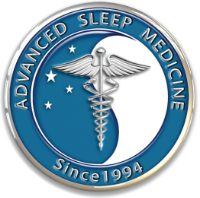
The Affordable Care Act (also known as ObamaCare) rolled out in 2014. Since then, we've seen changes in how healthcare is administered by many insurance companies.
Here's an overview of how sleep apnea testing in-center and in-home, PAP therapy and oral appliance therapy are affected by the Affordable Care Act.
The Affordable Care Act and Sleep Testing
Insurance will continue to cover sleep testing as long as it is prescribed by a physician. Patients will only have to pay for the deductible and co-pay designated in their insurance plans. However, a change is occurring in the type of sleep testing that is frequently administered.
Shift to Home Sleep Testing (HST)
Healthcare reform has caused a shift in the healthcare industry towards results-oriented treatment, as opposed to a pay-per-service model. This incentivizes insurance providers and patients to turn towards the less expensive option of Home Sleep Testing (HST), as opposed to a traditional in-center or in-lab test. Home sleep tests are typically only a fraction of the cost of an in-lab test. With Medicare payments for in-lab testing skyrocketing—from $62 million in 2001 to $235 million in 2009—HST can be an attractive option for patients worried about being on the hook for part of their sleep test owing to higher deductibles or copays.
However, Home Sleep Testing may not be a valid option for all patients, especially for those who have a more complicated sleep condition such as respiratory failure. Click here for a detailed breakdown of differences between HST and in-lab testing.
New Authorization Requirements
Most commercial insurances now require authorization for in-center sleep studies and many for home sleep testing. In order to obtain authorization, physicians must clearly indicate medical necessity. In some cases this requires additional paperwork and back-and-forth with healthcare providers even if medical necessity is obvious.
The Affordable Care Act and Patients Already Diagnosed with Sleep Apnea
Is sleep apnea a preexisting condition?
Good news for current sleep apnea patients: under the Affordable Care Act, insurance providers are not allowed to discriminate against people with preexisting conditions, one of which is sleep apnea. You cannot be denied coverage or charged more because of your apnea.
Most insurance policies will continue to cover usage of a PAP (Positive Airway Pressure) machine to treat obstructive sleep apnea, though deductibles and copayments might be different than those charged for testing or office visits (learn more about insurance coverage for sleep studies and PAP therapy here). A PAP machine is considered durable medical equipment (DME), which means it may be subject to a new tax under the Affordable Care Act. Patients with Medicare are able to test a PAP machine for three months, and if the results are shown to be beneficial, rent it for a period of 13 months prior to owning it.
PAP Users Must Prove Regular Usage
There are some downsides to Affordable Care Act for PAP users. Thanks to the results-based approach of the Affordable Care Act, insurance companies do not have to continue paying for the device if it is ineffective or the patient does not use it. Many insurance companies are now requiring proof of compliance from the patient or their equipment provider before they will pay for on-going device rental, purchase or additional replacement supplies.
Most insurance compliance guidelines require that you show proof of using your device for a minimum of 4 hours per day at least 22 days out of a consecutive 30 day period within the preceding 90 days (in the past 3 months). New PAP devices may include a wireless modem to wirelessly transmit compliance data to your smartphone, your physician, your healthcare provider or even your insurance company (read more wireless monitoring with "smart" machines here).
Additionally, some insurance companies may try to cut costs by extending the amount of time between replacing CPAP equipment (such as masks and hoses). Learn more about Medicare's guidelines for replacing PAP supplies here.
Does the Affordable Care Act Cover Oral Appliances?
Yes, under the Affordable Care Act, coverage for oral appliances to treat obstructive sleep apnea improved as long as specific Medicare-approved criteria are met. Oral appliances are also considered durable medical equipment, like PAP therapy. Mouthpieces for snoring, however, are not considered medically necessary and are not covered.
Ultimately, the changes from the Affordable Care Act depend on your specific insurance plan and your medical provider. How has your sleep apnea therapy changed under the Affordable Care Act?
Resources: PR Newswire, Health Advisor, Washington Post, The Martin Companies, Sleep Review
Editor's Note: This post was originally published in June 2014 and has been edited and updated for accuracy and comprehensiveness.




